Cross-posted from DFA Blog.
Today we continue our series on credit cards, looking at the economics of the business on a customer segment basis. We are using data from our household surveys, as well as industry cost and revenue benchmarks we maintain. This is segmented analysis, because consumer behaviour has a profound impact of the profitability of the business. In our client work we will segment the market down to twenty segments, or so, but today we will use a more basic three-way cut.
So, lets introduce segmentation, based on card use. We see Transactors, who pay off their balances every month without incurring interest charges; Infrequent Revolvers and Constant Revolvers. The average balances, and the balances on which they pay interest varies. We find that a high proportion of Constant Revolvers are struggling financially.
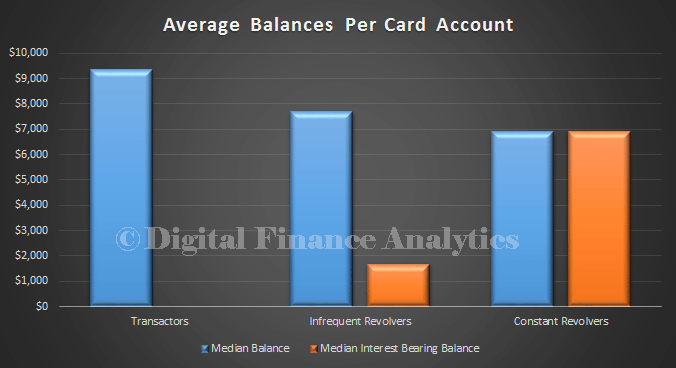
We can then look at their transaction patterns. Transactors are the most active card users, and the most likely to be enrolled in a rewards programme, collecting points as they go. Transactors will do all they can to put as much traffic through their cards to collect the “free lunch”. The other segments tend to use their cards less, and may not be enrolled into a loyalty scheme.
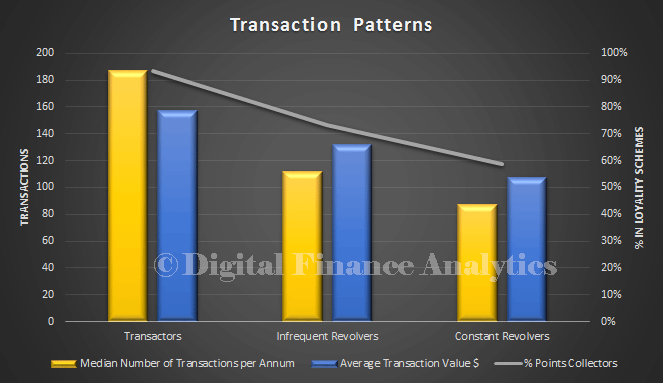
We then need to understand the transaction flows and fees in the system. Whether the card is an open scheme, like Visa or Mastercard, or closed like Diners and Amex, there are a number of elements to consider. Cards are issued, and bear an annual fee. Interest is charged on outstanding balances, after any interest-free period. Overseas transactions and cash withdraws will incur additional fees. At the merchant end, they will have a terminal provided by a bank, will incur merchant service fees when they accept a transaction, and some may charge a service fee (the regulations charged here recently, but some still charge the customer at point of sale). The bank issues a card, processes the transactions, generates statements, handles disputes, and frauds. All this costs.
So, we can look at the economics from the point of view of the main players. Households will pay for the card, but the most significant element is interest charged. So, no surprise then that Constant Revolvers are paying the most, and in fact will subsidise everyone else.
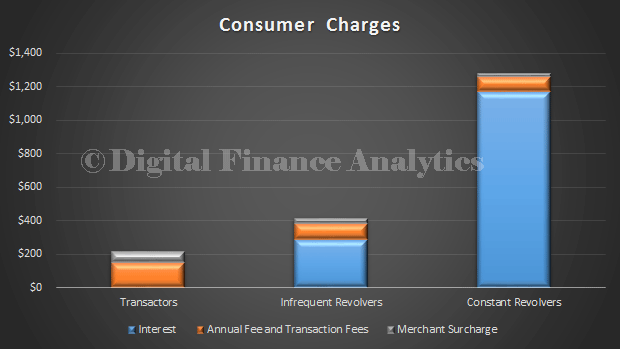
From a merchant point of view, they pay the banks to receive transactions, which helps them to sell their goods. Merchant surcharges offset some costs, but there is a net cost to the merchant to receive card payments. Online transactions may cost less.
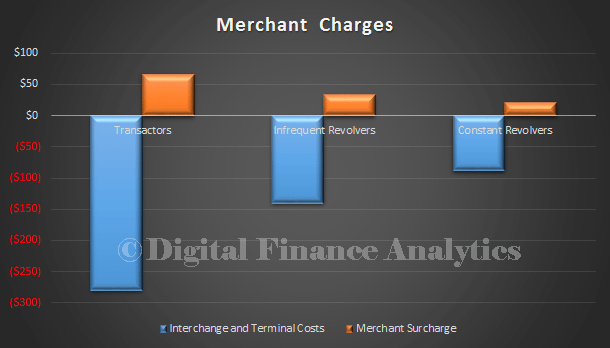
From a bank point of view, they make very little from transactors who have a rewards scheme, as loyalty is a net cost to the bank. A typical transactor will just about break even, if they use their points. [Actually about 50% of points are never claimed, so the banks can make a little more]. Constant Revolvers are significantly more profitable, typically worth more than $1,000 a year.
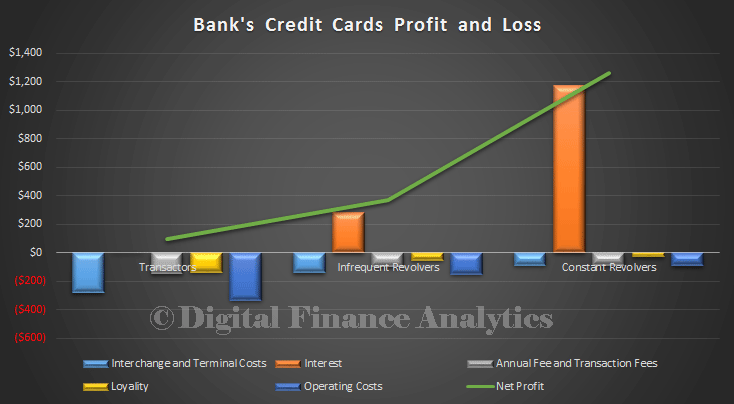
So the credit card business relies on those who continue to revolve to maintain the value of business.
Two other closing thoughts. First, banks hold vast volumes of credit card transaction data which can be mined to profile customers, some are waking up the the potential value of this information asset. Second, our segmentation enables us to identify which types of household more most likely to be in the Transactor or Revolver groups. Not surprisingly, this can lead to marketeers trying to devise strategies, like zero balance transfers to attract more of the most profitable customers. No surprise then to see a number of offers in the market at the moment. They can usefully reduce interest, but only if the balance is paid off before the expiry. New transactions will often incur standard interest charges, which are quite high at the moment.

